
Mario and Donkey Kong’s rivalry has existed for longer than I have been alive, dating back to the early years of gaming. The feud began when a then unknown Mario was forced to dodge the maniacal Donkey Kong’s barrels as he fought to reach the top of precariously designed towers to save a generic damsel in distress. Over the years Donkey Kong and Mario’s relationship has continuously teetered between friends and enemies, mainly due to Donkey Kong often being utilized as a villain when not starring in his own games. Enter Mario vs. Donkey Kong, a shining example of the fun that can stem from their rivalry, originally released to much fanfare in 2004 for the Game Boy Advance, but now built from the ground-up to utilize the power of the Nintendo Switch. But is this remake necessary in 2024, and does the original gameplay still hold up for modern audiences?
Personally, I believe that the answer is a slightly hesitant yes, though whether or not other players will agree with me will depend on what that player expects from a remake of a 20-year-old game centered around bite-sized levels. Not much has changed in terms of gameplay from the original release aside from a graphical overhaul, and Mario vs. Donkey Kong remains disappointingly simple; a basic playthrough lasts only a few hours and a 100% playthrough tacks on maybe double that. Despite its short runtime, Mario vs. Donkey Kong does remain quite fun, especially when played co-op. It is worth noting that two new well-crafted worlds have been added which may prove to be enough to entice those players who have completed the game countless times before to hop back in for another round.
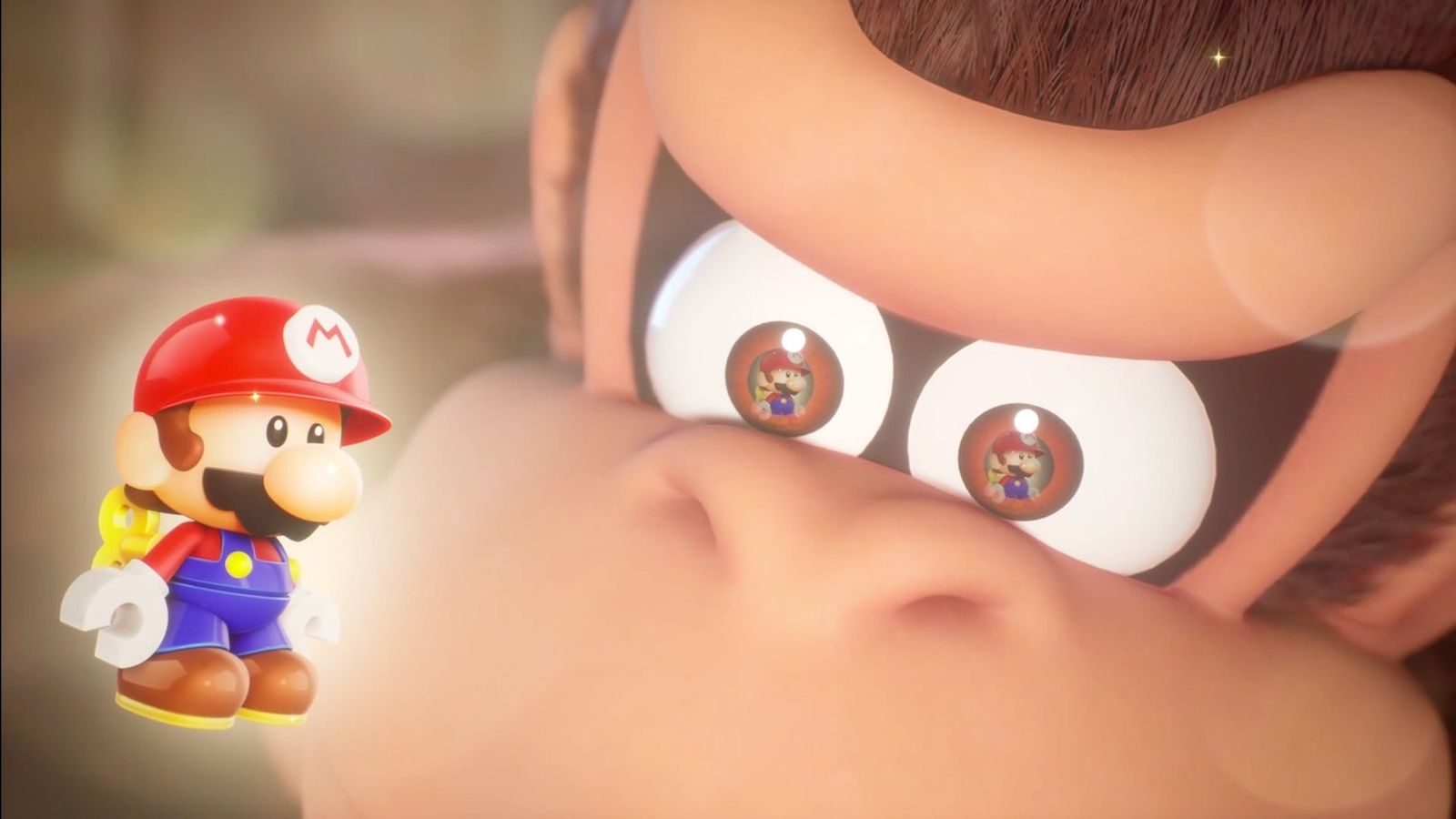

Mario games aren’t known for their stories, but just in case you have never played the original release, Mario vs. Donkey Kong centers around Donkey Kong becoming enamored with Mini-Mario toys after seeing a commercial. He then rushes out to purchase a few, only to find they have sold out. But as luck would have it, the factory which creates the toys is just a few steps away, and Donkey Kong promptly stops by to terrify the factory’s Toads and to steal their stock. Mario, who happens to be passing by as the frenzied Toads run for their lives, sets off in pursuit of Donkey Kong to take back what he stole. It’s not Shakespeare, but hey, it does what is needed to set the groundwork for the gameplay to follow.
There are eight worlds to chase Donkey Kong through (not counting bonus worlds and expert levels), and each world consists of 9 levels: Six basic levels, a Mini-Mario based level, a boss fight, and a 1Up Room. The six base levels make up the bread and butter of the gameplay and are always divided into two sections. The first section involves Mario having to find a gold key (and an additional silver key if playing co-op), and one or two of the three hidden presents which are scattered throughout each level. When playing in co-op mode, the silver key, once obtained, follows your character around and unlocks a padlock blocking the exit door. The gold key is found in both solo and co-op modes and must be picked up and carried through the level to the exit door, and can then be used to unlock the exit. Once unlocked, you can exit the first section and head into the second section of the level. The second section contains the remaining presents which were not hidden in the first section, along with a Mini-Mario. The goal is to reach the Mini-Mario. You have completed the level once the Mini-Mario has been successfully rescued.
Each level serves as a puzzle, with Mario having to figure out how to get past enemies – he can no longer jump on their heads to dispatch them – and often how to use enemies to his advantage. There are traps, deadly spikes, ladders, switches, and all sorts of obstacles preventing Mario from easily reaching his target. As mentioned before, the gold key is the most difficult item in the level to deal with; as it must be carried through the same traps you passed to reach it, but cannot be carried up and down ladders and a few other obstacles. When dropped, the gold key has a 12 second timer which immediately starts, and when it reaches zero it will return to its initial resting place. The timer is a much needed dose of stress which invigorates the player and forces the player to devise a plan of attack before attempting to cross a few of the more challenging sections.
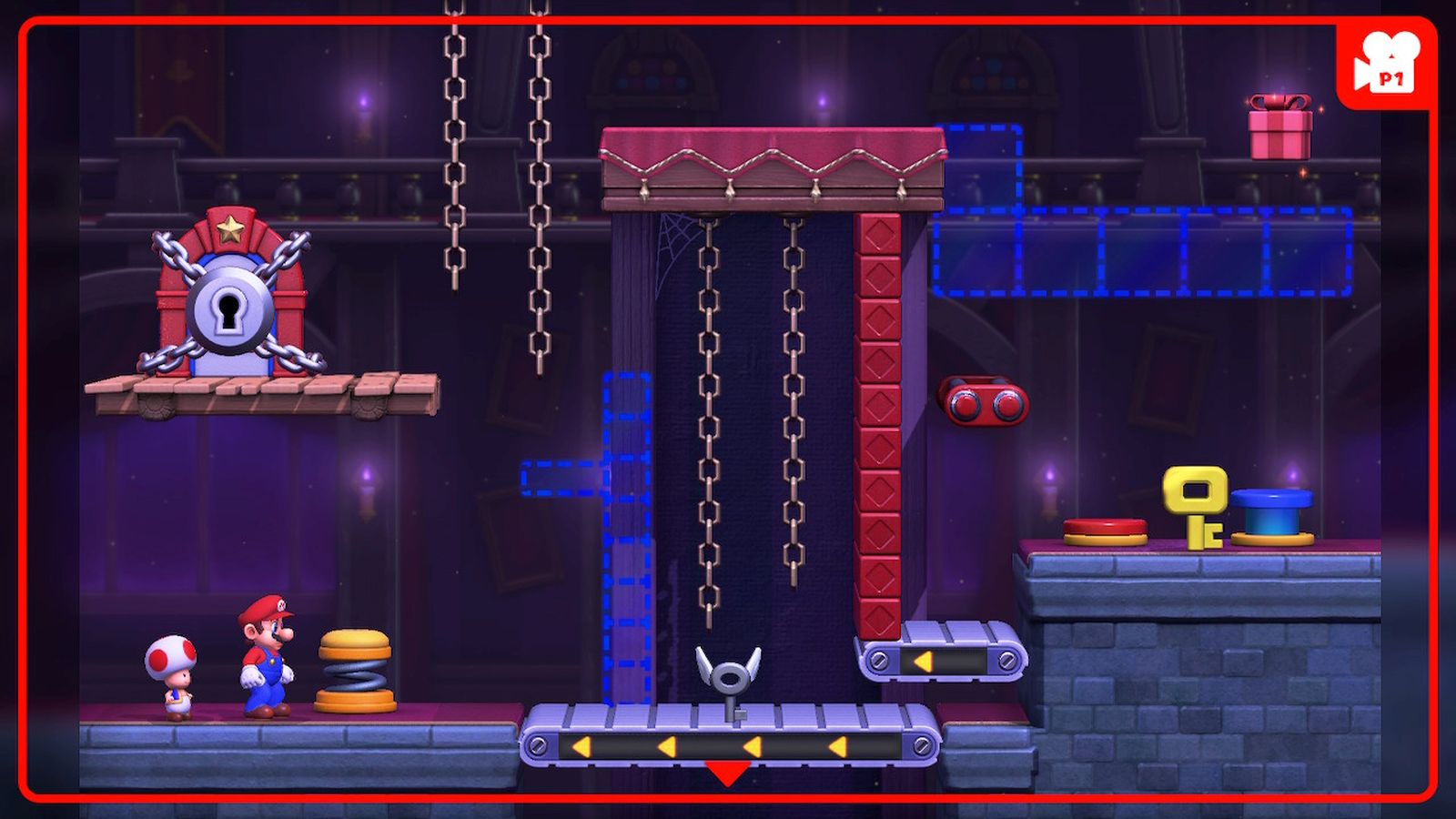
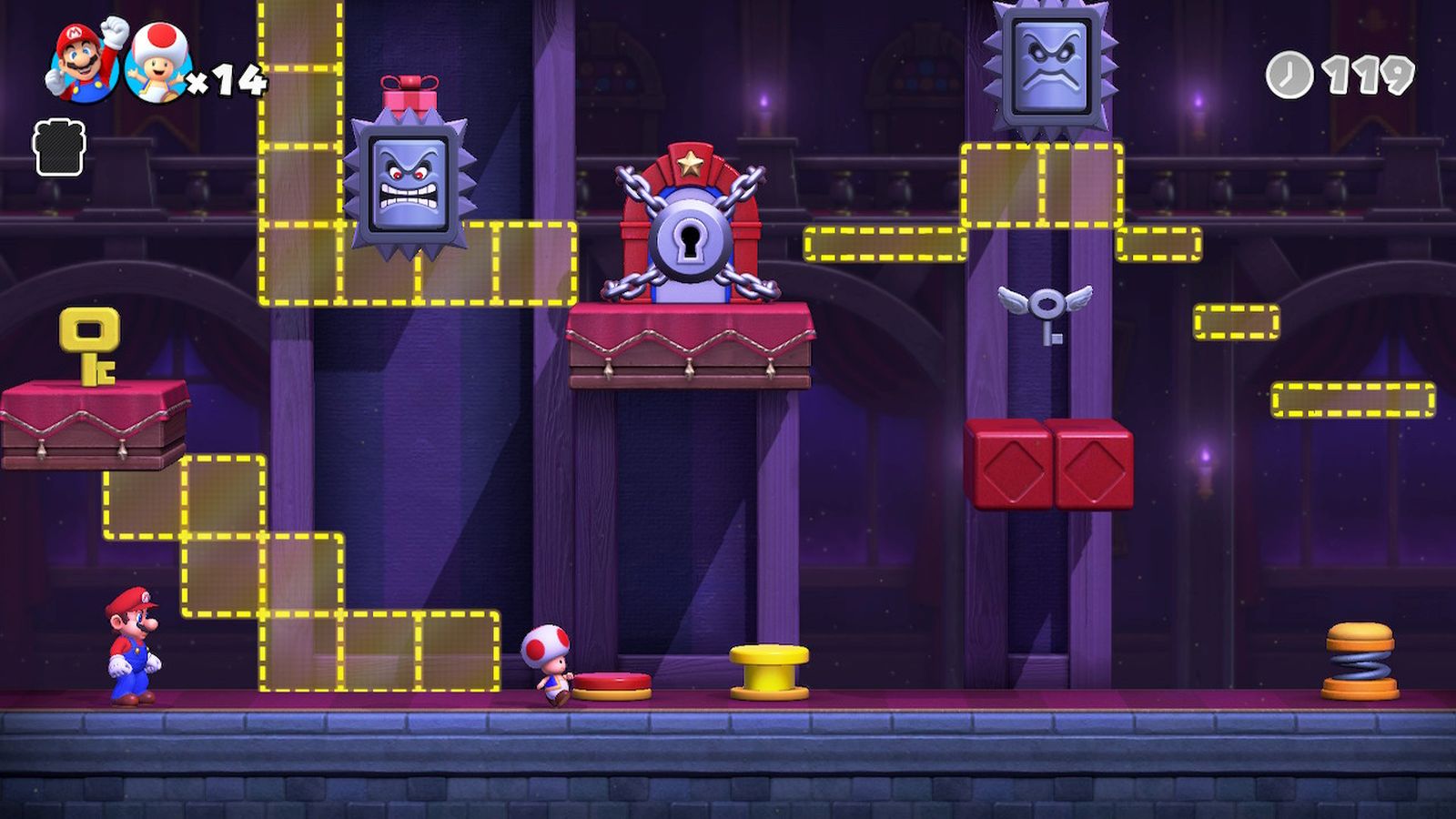
When beginning the game you can choose default or casual difficulty, the latter removing some of the more tricky obstacles. I’ll never judge someone for the difficulty setting they choose, but in the case of Mario vs. Donkey Kong I’d highly recommend that players – even those who normally tackle first playthroughs of games on easy settings – play on default difficulty. The bulk of the gameplay is incredibly simple, with only a few levels ever pushing into complicated territory and most of that hardship stems from the time limits.
Level design is often good, with most levels built vertically. To view the entire level you must make use of the free view mode, initiated by holding in the R button. The free view mode allows you to scan the entire room at any moment, which is helpful for quickly locating items, enemies, and obstacles. Free view mode is a great addition and I often found myself utilizing it the second I stepped foot into a new room to figure out where all required items were located and to plan my route. When playing co-op the free view mode is helpful for deciding which player will be responsible for obtaining specific items and to devise a plan on how to complete the level quickly.
As you complete the world’s base levels, eventually a 1UP level will open. As you most likely ascertained from the name, The 1UP level has multiple 1UP’s scattered throughout along with a floating key. Your goal is to collect as many 1UPs as possible along with the key and to rush to a chest which contains – you guessed it – more 1Ups. There is a short time limit for these levels, making the rush to obtain the key and reach the chest often stressful, though there is no danger of dying and the worst-case scenario is you don’t obtain any 1Ups. These levels are fun but would be more exciting if the number of lives you have really mattered during gameplay. While losing all your lives does result in a game over, the only penalty you receive is being forced to repeat the level you were on when you died from the beginning. After each game over you return to the game with 10 lives, so there’s rarely any fear of running out.
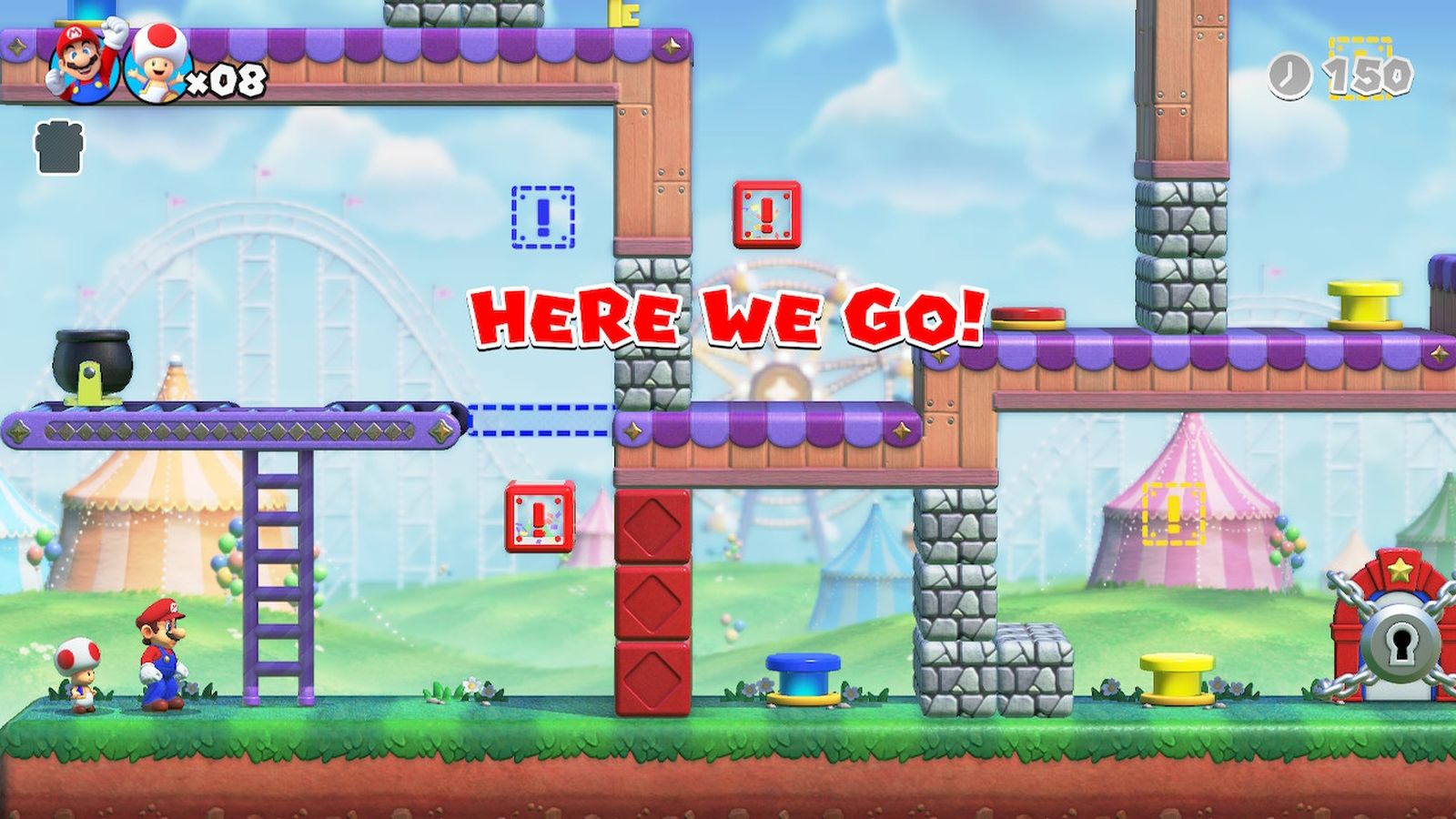

Once the six base levels of a world are complete, you unlock a Mini-Mario based level. In the Mini-Mario based levels you are followed by the six Mini-Marios you rescued during your jaunt through that world, and you must lead them through the level to obtain three letters, which spell out T-O-Y. To do so you must find ways to secure a safe route, as the Mini-Marios can be killed by the levels’ enemies and obstacles. Once you have obtained all three letters, you must then lead the Mini-Marios to a chest. I found these levels to be quite fun and a welcome change from the base world challenges. It’s a pity that they are relatively short. It was a nice surprise to find that the plus worlds, which are unlocked after completing the base game, do throw a Mini-Mario into each level to provide an extra challenge.
The final level of each world is a showdown with Donkey Kong, which consists of Mario having to dodge falling or thrown objects while picking up objects to throw at Donkey Kong. Mario’s health for this fight is dependent on how many Mini-Marios he saved in the previous level, while Donkey Kong always takes four hits to defeat. None of these fights are particularly hard, unless you are going for a perfect run, which means you need to avoid being hit at all during the fight. I was surprised by the lack of creativity on display here, as Nintendo usually does have imaginative boss fights. As they stand the boss fights are fine, if a bit underwhelming.
I mentioned completing a perfect run, so let me explain. Each level allows the player to obtain either a silver or gold rank, depending on if they completed all goals. For the base levels, those goals consist of finding the three presents, collecting the gold key (or both gold and silver keys if playing co-op), and saving the Mini-Mario. For the Mini-Mario level, that gold comes from getting all six Mini-Marios to safety without losing any. Finally for the boss fights, you must avoid being hit to obtain the gold reward. The number of gold rewards you obtain directly lead to the number of expert levels which unlock later. No worries if you don’t obtain a gold medal on your first run-through of a level, you can replay any level at any time.

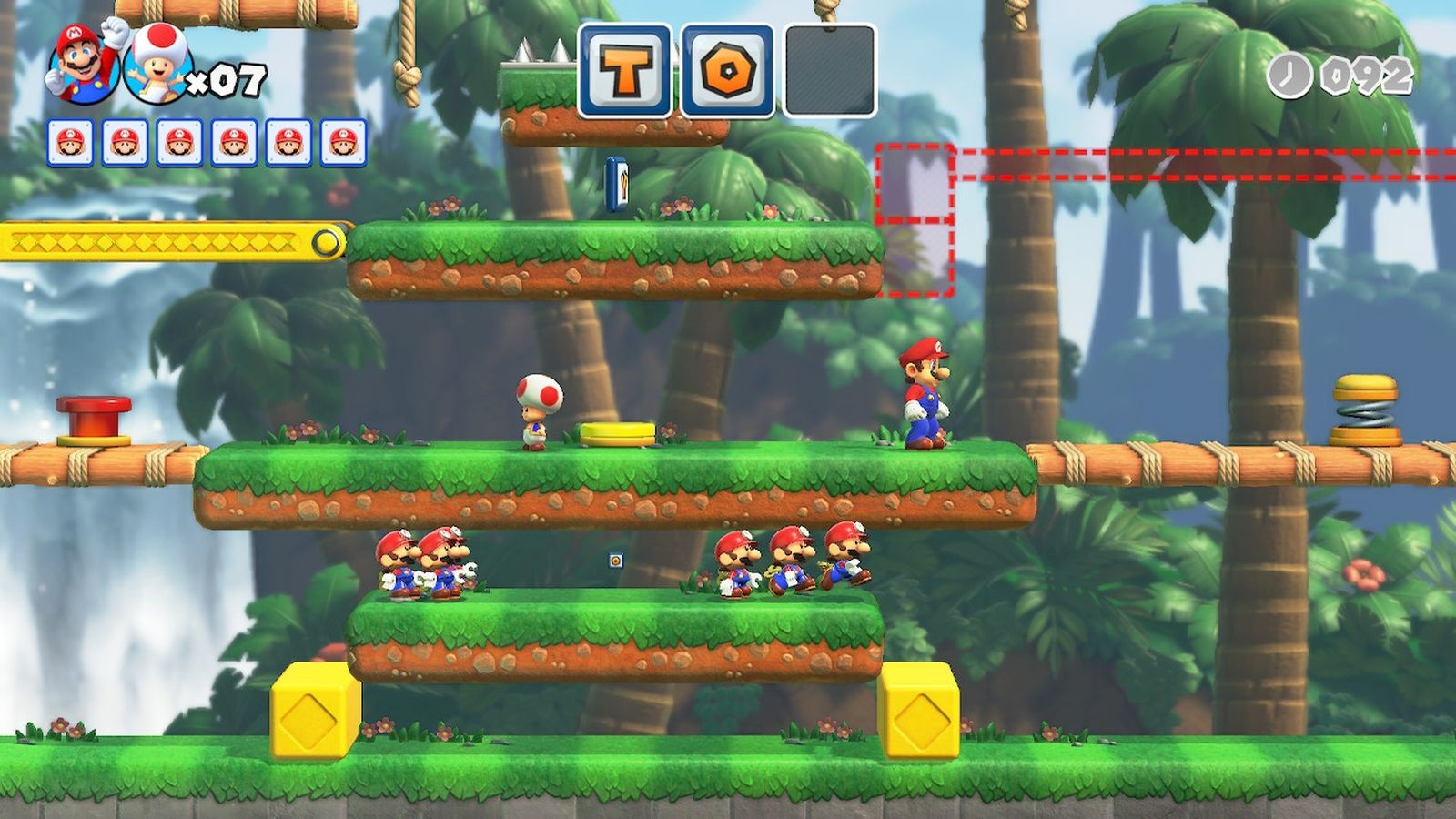
During gameplay you’ll see a decent variety of enemies and locations which you’ll recognize from both the Mario and Donkey Kong series of games, and Mario boasts many of the same moves, including an extremely helpful back flip. New to Mario’s arsenal is a handstand and spin, with the handstand being used to launch to higher areas or to protect Mario from falling debris. Personally, I wouldn’t want to have to maintain a handstand every time objects fall from the sky, but Mario, as we all know by now, can handle even the most athletic of feats with ease.
Unfortunately, for a game based around puzzles, there is never much in the way of a challenge. Sure, a few levels take a moment to acclimate to, and the timer can become a nuisance on more intricate levels, but overall, you can breeze through the initial eight worlds in one or two short gameplay sessions. I also fail to see many players replaying Mario vs. Donkey Kong once they complete it, as the challenge is all centered on figuring out how to complete a level, and once you have that knowledge then any future playthroughs would involve you simply running through the same areas again. There is a time attack mode which might provoke a few players to play through the levels a few additional times, but I don’t see that alone as providing enough challenge to sustain longevity.
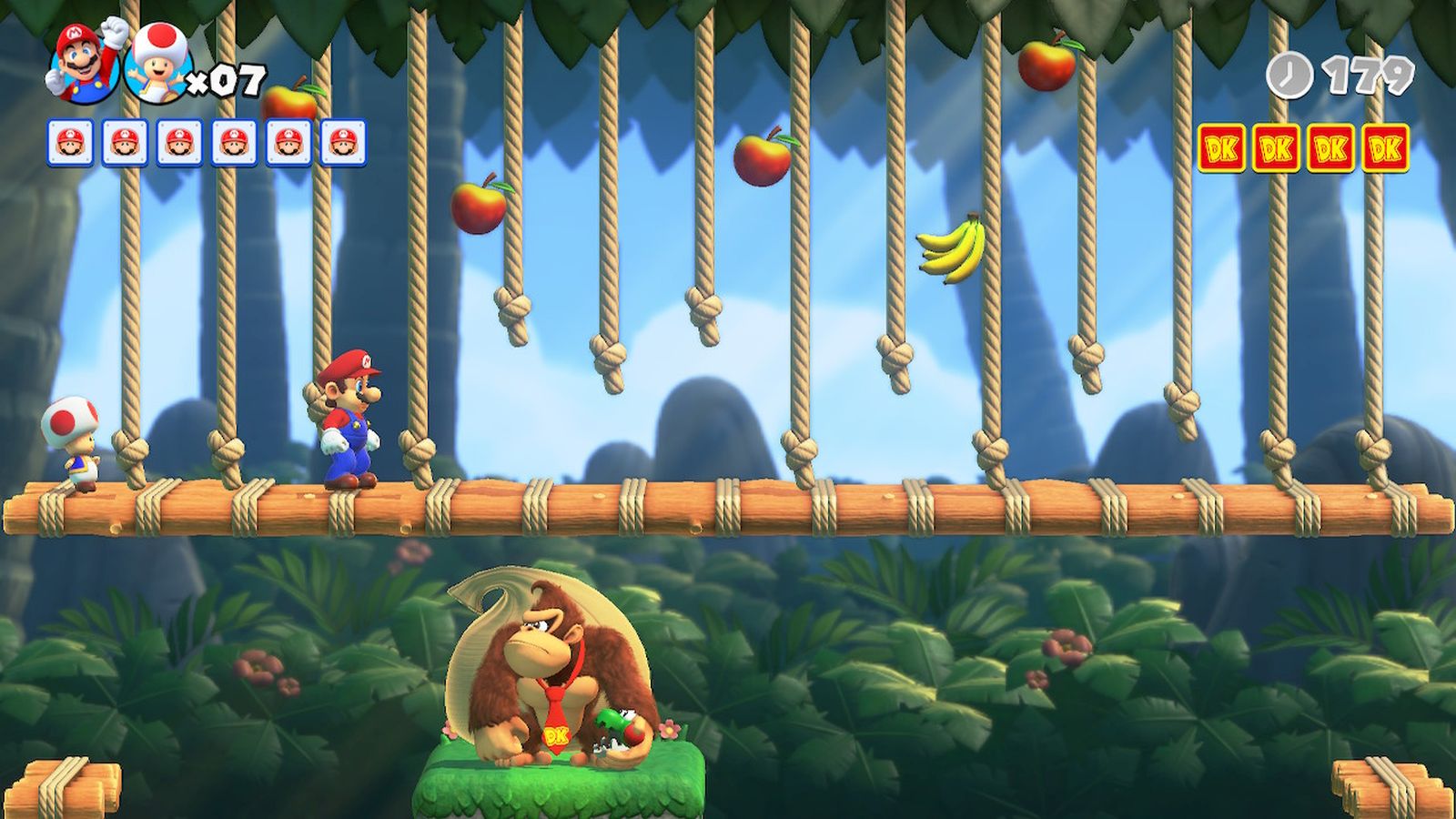
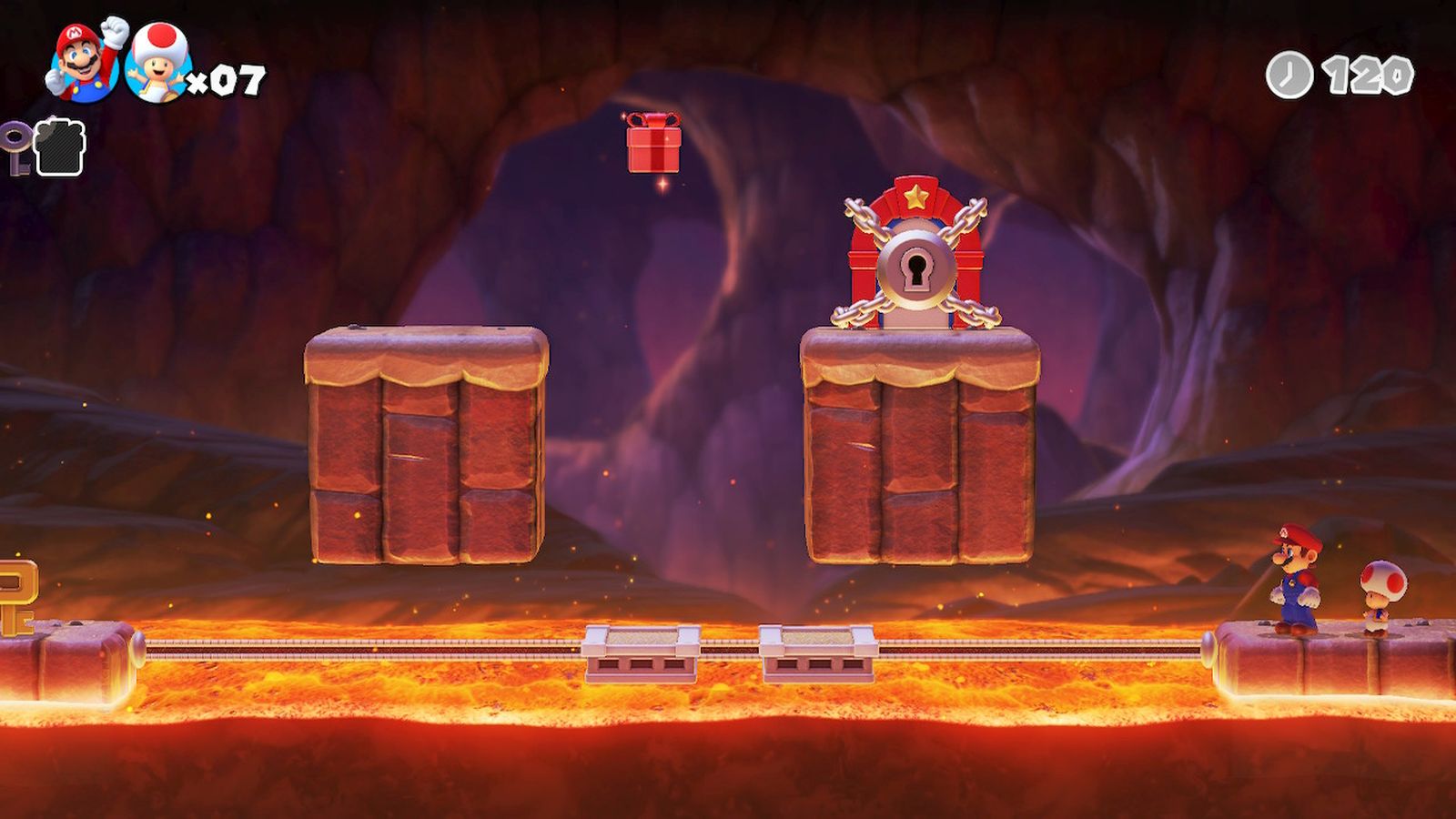
Thankfully, Nintendo has always been a huge advocate of couch co-op and playing through Mario vs. Donkey Kong with a friend is a blast and arguably the best way to experience the title. One player will play as Mario, while the 2nd player takes the reins of Toad, with both players being completely free to roam the level on their own. My wife and I would often scope out a room using the free view mode, choose targets, and then run off in separate directions to accomplish our goals. In the moments when we had to work together we had a blast, yelling out commands and attempting to dodge challenges while often getting in each other’s way. We had a great time with the game during its short campaign, but despite that I can’t see myself coming back to it much in the future.
As always with Mario titles, the game plays smoothly and I experienced no technical issues. The game loads every section instantly, allowing for hassle-free play sessions. Overall, I had a great time, however short-lived It was, with Mario vs. Donkey Kong and do recommend grabbing a friend or a family member and tackling the game together.
Mario vs. Donkey Kong
Good
Mario vs. Donkey Kong is a great looking remake of an already fun game, which is made better by the inclusion of two new worlds to complete. Unfortunately, the game is quite easy, and the entire experience ends too quickly, which may hamper replayability. Still, it is well worth grabbing a friend or family member and dedicating a weekend to completing the game.
Pros
- Great visual update
- Couch co-op
- Two new worlds to complete
Cons
- It is over far too quickly
- The entire game is a bit too easy
- Lacks replayability aside from a basic time attack mode
